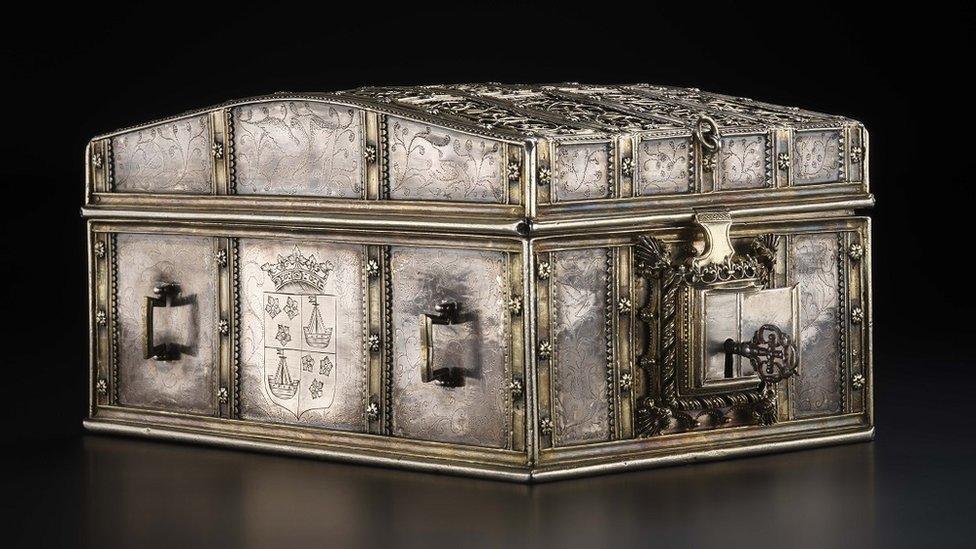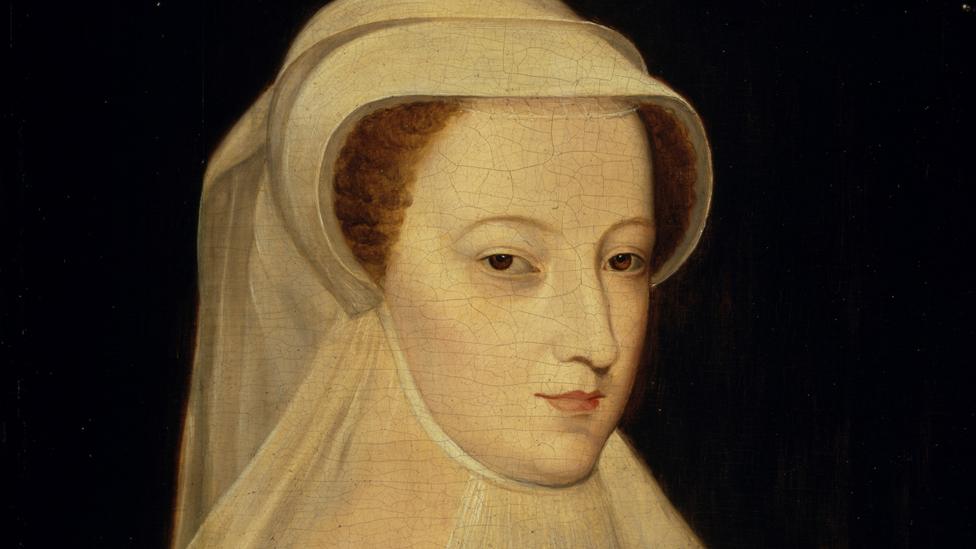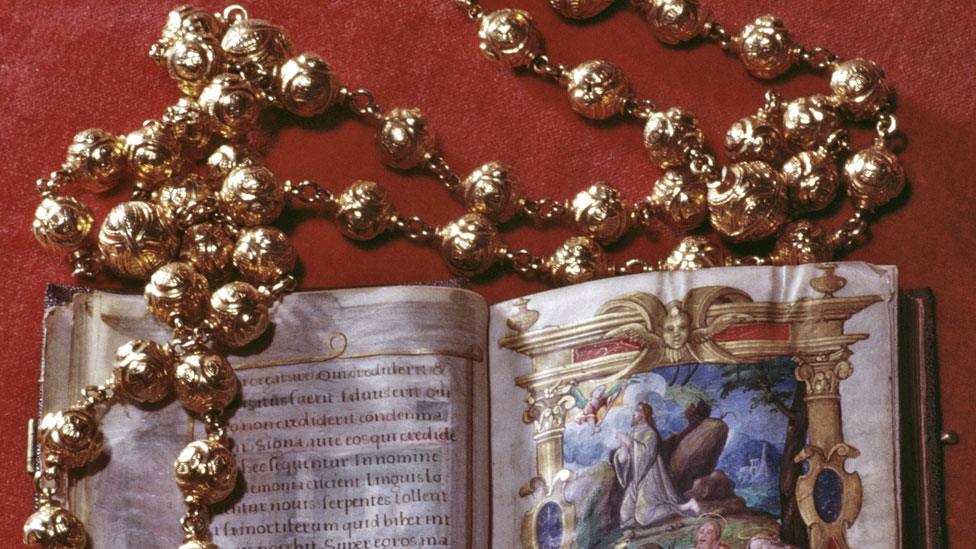Mary Queen of Scots treasure bought for Scotland
- Published

A Scottish national treasure once owned by Mary, Queen of Scots, has been bought for £1.8m.
The silver casket has been secured by National Museums Scotland, external for the nation.
The casket, which was made in Paris between 1493 and 1510, will go on display at the National Museum of Scotland.
The rare work of early French silver is believed to have once contained letters which played a role in Mary's downfall.
In December 1568, a similar chest was produced at a hearing ordered by Elizabeth I against Mary at Westminster.
This contained what would become known as the Casket Letters.
These love poems and letters, allegedly from Mary to her third husband, the Earl of Bothwell, implicated them both in a conspiracy to murder Mary's second husband, Lord Darnley.
'Genuine article'
The museums body said the casket was a "superb and extremely rare" work of early French silver, very little of which survives, even in France. It is likely that its long-standing association with Mary has kept it preserved for over 450 years.
For three centuries, it was owned by the family of the Dukes of Hamilton, following its acquisition, around 1674, by Anne, Duchess of Hamilton.
According to a handwritten note stored with it from the late 17th century, she bought the casket, previously owned by Mary, Marchioness of Douglas, on the understanding that it had belonged to Mary, Queen of Scots.
The note records the belief it is the genuine article involved in the Lord Darnley conspiracy.

The silver casket is believed to have been owned by Mary Queen of Scots, who was held in captivity for 19 years before she was executed
The casket was acquired by National Museums Scotland from Lennoxlove House Ltd, its owner since the middle of the 20th Century.
The £1.8m cost was met with support from the National Heritage Memorial Fund, Art Fund, the Scottish government and several trusts, foundations and individual donors. The sale was managed by Sotheby's.
Dr Chris Breward, director of National Museums Scotland said: "This extraordinary casket is truly one of Scotland's national treasures.
"Venerated as a relic of Mary for centuries, it is believed to represent a momentous and disastrous moment in her turbulent life.
"Beyond this, the magnificence of the piece speaks to a queen at the height of her powers, wealth and position.
"I am delighted that this beautiful object has been acquired for the nation."
Precious jewellery
It is thought that the casket was given to Mary by her first husband, François II of France, and came to Scotland with her in 1561 after his death in 1560. Her inventories from this time listed multiple examples of precious jewellery and other such valuable objects.
A casket first appeared in records following Mary's arrest in 1567 by the rebellious Confederate Lords, when it was discovered in the hands of Lord Bothwell's servant.
It was brought before the Scottish Privy Council where its lock was struck off to reveal its contents. What these were at the time is unknown. However, a year later, when the Earl of Moray produced the same casket at Westminster, it now contained the damning Casket Letters.
The authorship of the letters remains a subject of debate, but it is widely thought that they were doctored. Following the hearing at Westminster, Mary remained in English captivity for 19 years, until she was executed in 1587 for her involvement in the Babington Plot to assassinate Elizabeth I, and place Mary on the English throne.
The National Heritage Memorial Fund contributed £810,000 towards the acquisition.
A spokesman said: "Not only will memorial funding bring an object of great national importance into public ownership, it will bring to life the story and secrets of the casket and of Mary Queen of Scots to a whole new generation of visitors at the National Museums of Scotland ."
Culture Minister Neil Gray said: "I'm delighted that the Scottish government's contribution of £200,000 to the National Museums Scotland Acquisitions Fund has helped to secure this exquisite casket for the nation.
"Quite apart from the colourful history associated with the item, given the belief that it belonged to Mary, Queen of Scots, the silver casket is a stunning work of art in its own right."
Lennoxlove House said the casket's sale would enable the long-term maintenance of the house and its contents.
- Published22 November 2021

- Published24 May 2021
